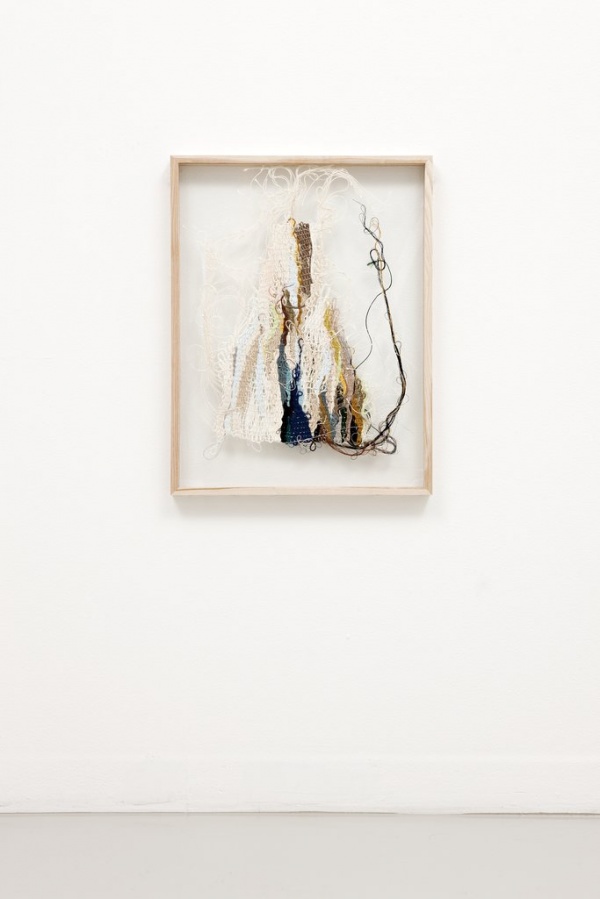Ann Cathrin November Høibo, Christopher Burden On My Shoulders, 2012
Ann Cathrin November Høibo, Christopher Burden On My Shoulders, 20 January – 18 February 2012
Standard (Oslo)
Having graduated from the Oslo National Academy of the Arts last year, Høibo has made herself known for installations that rely on a layering of disparate elements and combining among others sculptures, framed works and textile works. While starting off studying the craft of tapestry weaving, her first solo exhibition aims at diffusing the distinction between that which is industrially, mechanically, or manually produced.
In 2002 the Belgian actor Olivier Gourmet was given the award for Best Actor at the Cannes Film Festival for his role in the movie “Le fils”. Directed by Jean-Pierre and Luc Dardenne the film had Gourmet portraying a carpentry teacher in a training school for troubled teenagers. With the camera entirely in synch with his pace we would follow him around the workshop and with an equally extreme attention to details we would learn of the trade and manual labour of woodworking – the grain of timber, the density of various wood types, and the mundane, yet meticulous, work of cutting and carrying planks. The result was a sheer ordinariness where matter-of-factness turns materials into facts.
Høibo’s choice of objects, such as instant noodles, synthetic leather and IKEA shelving units, have in common that they fit the description of ‘inferior goods’. The term stems from consumer theory and refers to a good that decreases in demand when consumer income rises (as opposed to normal goods, for which the opposite is observed). Inferiority would here apply to an observable fact relating to affordability rather than a statement about the quality of the good. “As a rule, these goods are affordable and adequately fulfill their purpose, but as more costly substitutes that offer more pleasure (or at least variety) become available, the use of the inferior goods diminishes”. These make-shift industrial materials objects serving during times of less, could not be at a further distance from the trade that Gourmet’s character is teaching in “Le Fils” or the trade that Høibo learnt herself. The textures and rhythms of manual labor, whether it be weaving and carpentry, are at once irreducibly physical and saturated with an almost spiritual significance. Contrasting in both method and matter are four framed fragments of tapestries.The work process allows Høibo a material and methodical research that in itself pushes towards permutation. Here, the four weaves are stripped down beyond structural foundation towards disintegration, willingly accepting the category of fragment. Juxtaposed with the bronze sculptures and synthetic leather monochromes they make an odd conversation about a renewed relevance of ‘arte povera’; not necessarily true to stylistic traits of the original movement but true to a time of actual poverty. If a term as ‘recessional aesthetics’ ever had a sense of purpose, there never was a more apt sculptural response than a cast of instant noodles.

